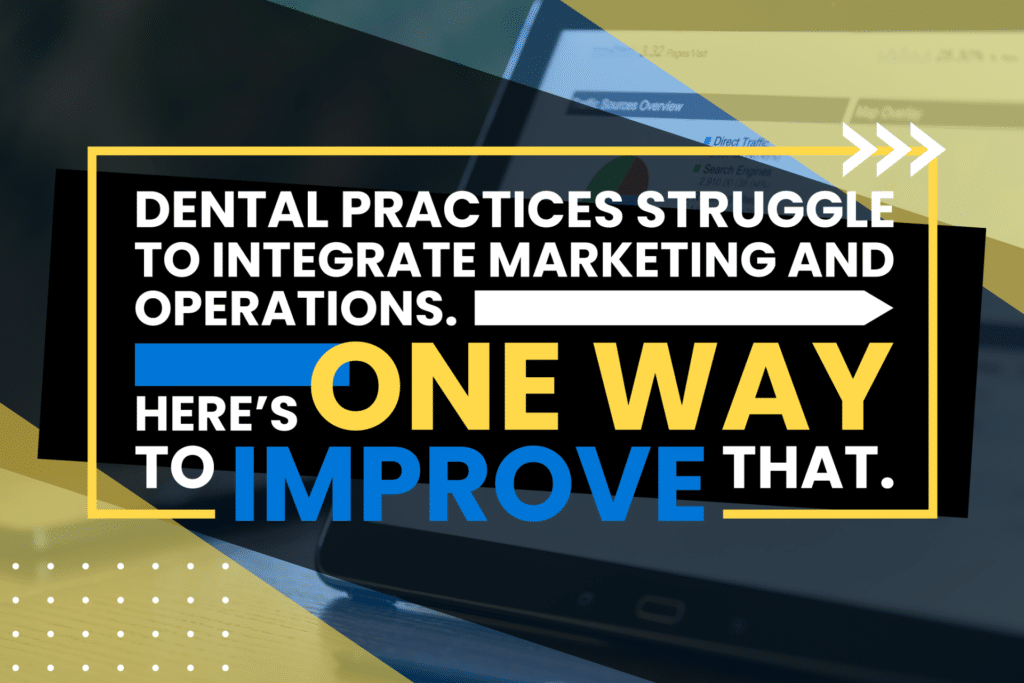We get it. After a long day of doing everything from answering phones, handling logistics, coordinating schedules, overseeing the latest PMS upgrade, and managing an inevitable crisis or two, most front-office or business operations folks don’t have much bandwidth left over to think about marketing.
Especially if they already have a marketing team they think is supposed to handle it for them.
Unfortunately, that disconnect is a big reason why so many dental practices see weak new patient growth. Bringing a new patient into your waiting room is an all-hands-on-deck affair — and one that cannot succeed without collaboration between marketing and operations.
Think of it like this. Your marketing team is responsible for making your phone ring. (Or for generating contact with a potential new patient over chat, text, email, etc. You get the idea.)
But what happens when your front desk person answers that phone call? That’s on your ops team — as is everything else that happens once that patient has begun communicating with your practice.
In other words, you can’t separate one from the other — they’re hopelessly interdependent. And practice leaders who fail to recognize that fact are costing their businesses money.
Now, truth be told, improving cooperation between marketing and operations takes time. It’s an ongoing process that you’ll need to continue to work at throughout the lifetime of your practice.
However — here’s one simple move we suggest you use to get started. We’ve seen this pay big dividends and it’s not hard to implement.
Ready for it?
Get really clear on your marketing goals — stuff like how many new patients you want to see, how much it costs to acquire each new marketing patient, and how much it costs to generate a lead. Then make sure that your operations team understands those goals just as well as your marketing team does.
For example, you could say that you’re aiming for 10 additional new patients per week, with a cost per lead of $150 or less and a cost per acquisition of no more than $200.
Here’s what this creates: buy-in. All of a sudden, successful marketing isn’t just some abstract concept, but concrete, tangible numbers that your ops team members can work towards.
Every time your call handlers miss a phone call, for example, they’ll know that they’ve potentially just lost a new patient — and thrown away a lead that cost $150 to create. That’s an own goal and nobody wants to be that guy (or gal).
Every call answered, meanwhile, gives those same team members the opportunity to put up points. Get really good at turning phone calls into scheduled appointments and you won’t just have an easier time meeting your overall new patient goal but do so using fewer leads — decreasing your overall acquisition costs.
Put your goals up on the wall in black and white. Get specific. Make sure everybody understands what they are, why they matter, and how each team member can help achieve them.
Give people a reason to work together and they will.
Get Fresh New Patient Tactics and Insights
Sign up for our newsletter today!





